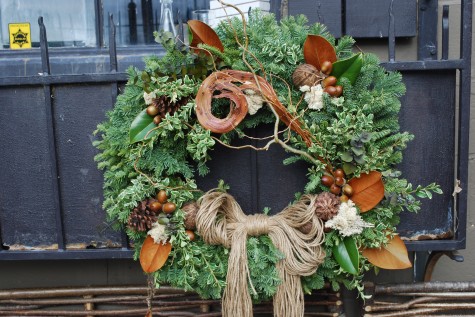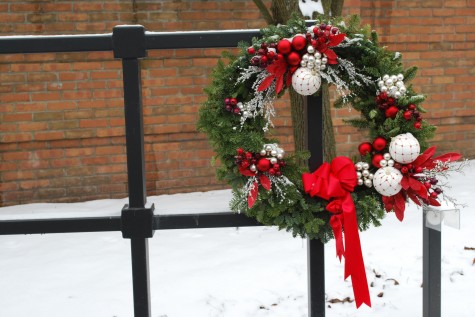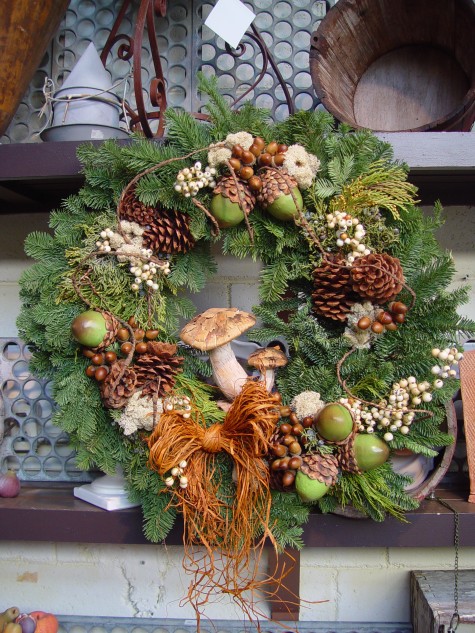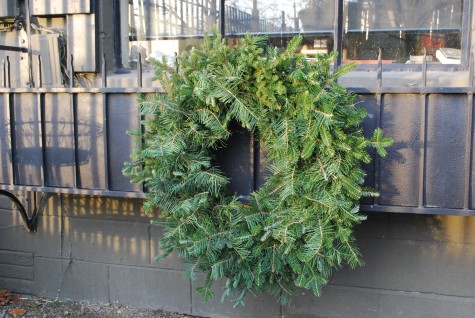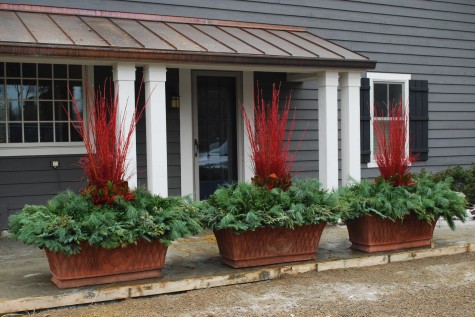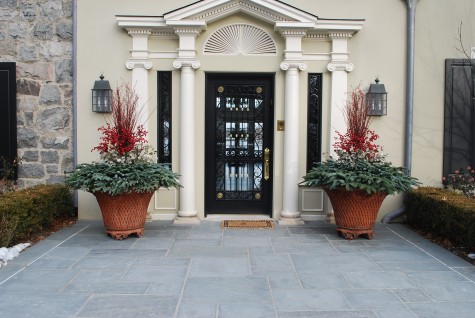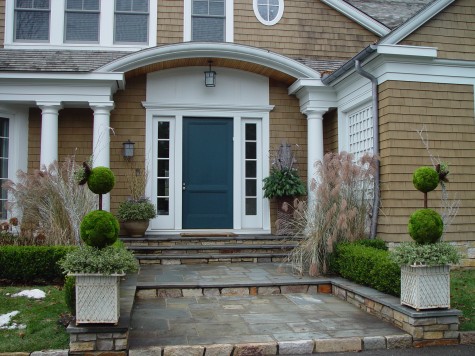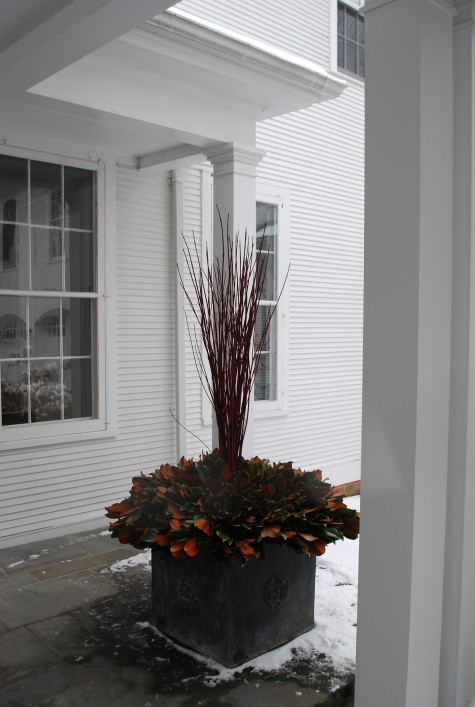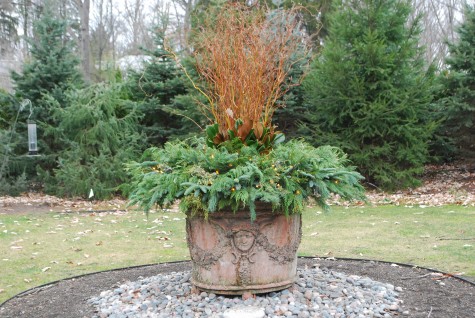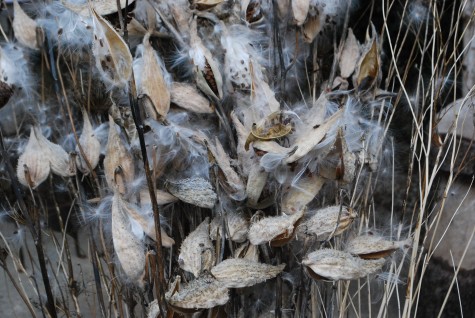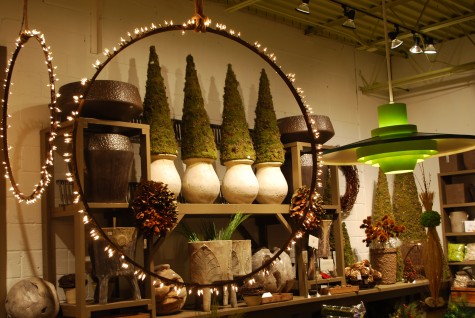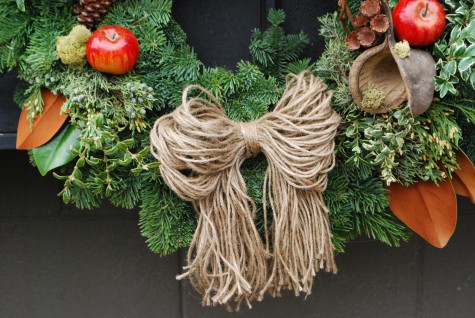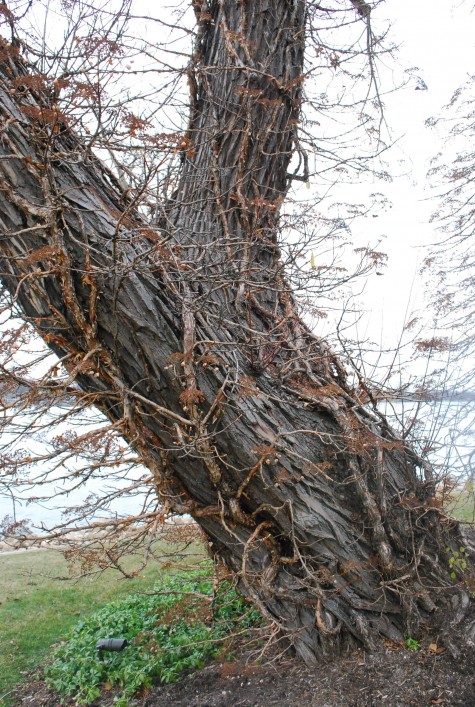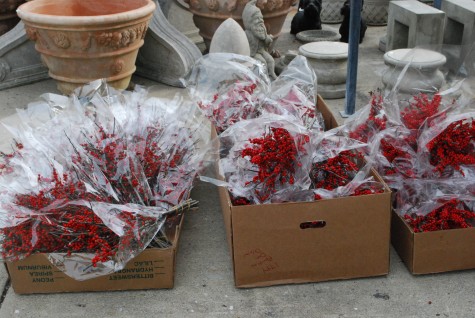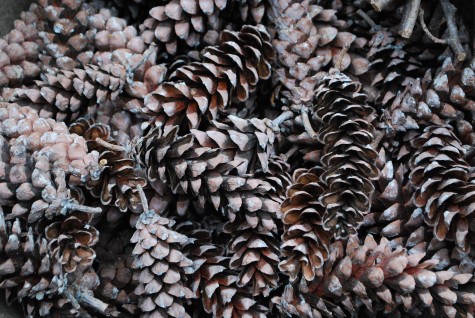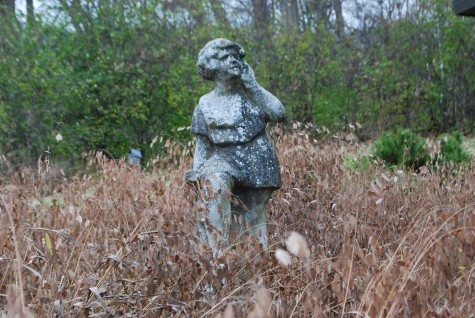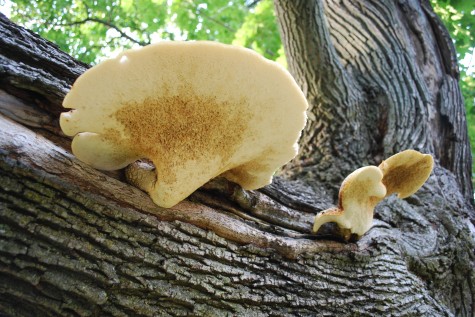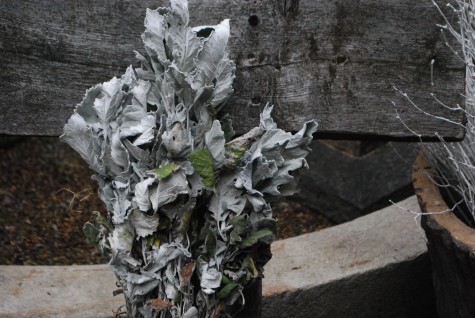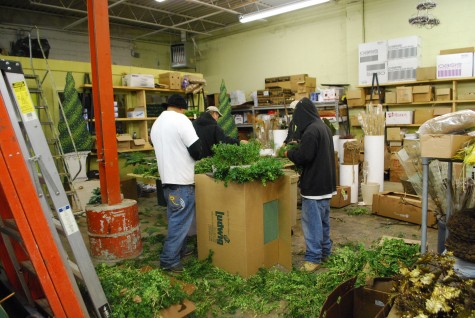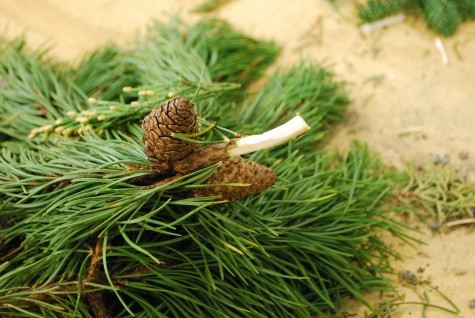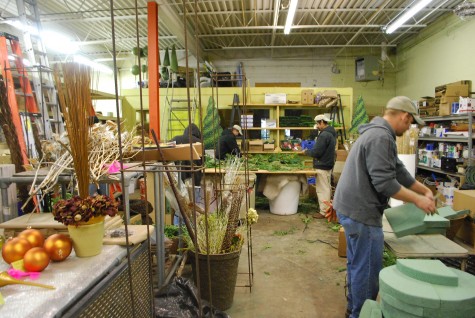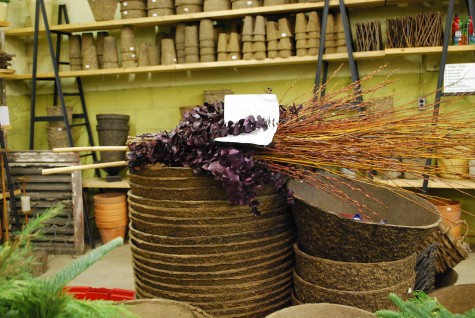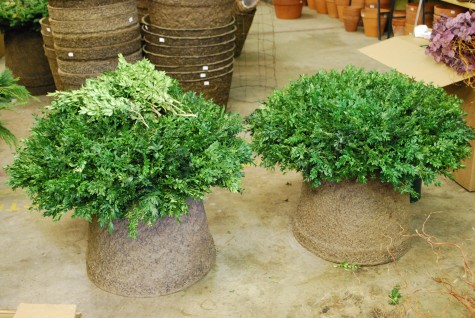I was at market Saturday morning at first light, shopping. The market is full of beautiful greens, wreaths, integrifolia, Christmas trees-and everything else to go with-including these feathered cardinal ornaments. I ran out of all of the evergreen holiday wreaths I ordered-I needed to shop for more. I was impressed; what was available at market this morning is first rate quality. The greens are fresh, and each wreath is stuffed full.
There are all kinds of reasons to shop local farmers and merchants-no one disputes that a vital local economy is good for everyone. Vegetables and fruits that have to be shipped suffer the consequences. Tomato varieties that ship well are grown more often by farmers dependent on shipping to sell their produce- than tomatoes that just plain taste good fresh off the vine. I could see that idea at work this morning. A grower whose materials I shop in the spring comes to market in early winter with hand made wreaths, roping and greens.
All of the locally made wreaths had such astonishing volume. The wreaths I have shipped to me are stacked up and tightly baled in twelves. This prevents shipping damage. This shipping process turns my wreaths into wreath pies-they are pressed flat. A wreath should not be a two dimensional pie of evergreens-it is a three dimensional sculpture. The shipping process means I have to add greens to restore the volume that once was. Or perhaps these wreaths are made to be flat-so they occupy as little shipping space as possible, and transport easily. However, a reasonably priced base wreath that ships economically suits what I do.
I buy wreaths in bulk from my greens supplier. No one comes to me for a fresh wreath they can take home and hang on a door-end of story. They come to me for a wreath that has some individual elements added to it. I get a direction, a color scheme, a style idea from a client. My base wreaths are a foundation, not a road ready green sculpture. No two that I decorate are just alike. Some may feature bracket fungus and moss. Some may glitter in the low winter light. Others may be just plain fun. Some are meant to delight kids.
What I collect from the field, what I buy and glue or wire in-anything goes. I like any beautiful natural material, and any beautiful not natural material. More than any other form of gardening, holiday gardening encourages exuberant free expression. My holiday garden is not about life and death-it is about celebration. If my neighbors choose to have a trio of lighted snowmen in their front yard, who am I to criticize? A wreath is a holiday diorama of a manageable size.
But back to my visit to market this morning. My pie-faced wreaths-I add more greens to them-after I have glued in all of the other elements. This is a step I need to take. I like a wreath that comes off the page, and speaks volumes. Never mind that a magnolia wreath has no end of leaves stuffed into it-I always buy bunches, and add leaves where I think that wreath needs more dimension. Not everyone can articulate why this looks good, and that which looks rote-but people have an uncanny ability to discern the difference. I like being a member of that group, The Differences. This means I may have to go back in, and make subtle changes.
Dan Prielipp’s concolor and noble fir wreaths at market this morning were sparse, but beautifully volumetric. So much air. Concolor fir has a big, rangy, open texture-his wreaths capture that perfectly. I could have taken a bunch of them home, and hung them everywhere. They would look great wired to the back of a garden bench, or laid over a sundial. His mixed noble fir-boxwood wreaths are the natural equivalent of an inflated intertube you would feel utterly confident riding downstream. His greens and wreaths are available in all sizes and shapes, and his range of material is good. The Oakland County Farmer’s Market-he is there Tuesday, Thursday, and Saturday. Everything fresh, everything hand made-and local. Nothing has been smashed flat to ship.
Do not take this to mean that a pie of a wreath cannot be redeemed. It can. That part is up to you. Hang it up, and put your eye to it. What is your pleasure? Build a wreath that talks about that. Welcome to my home-that is what a wreath says. No matter your persuasion or point of view, I will be interested in what you have to say.

